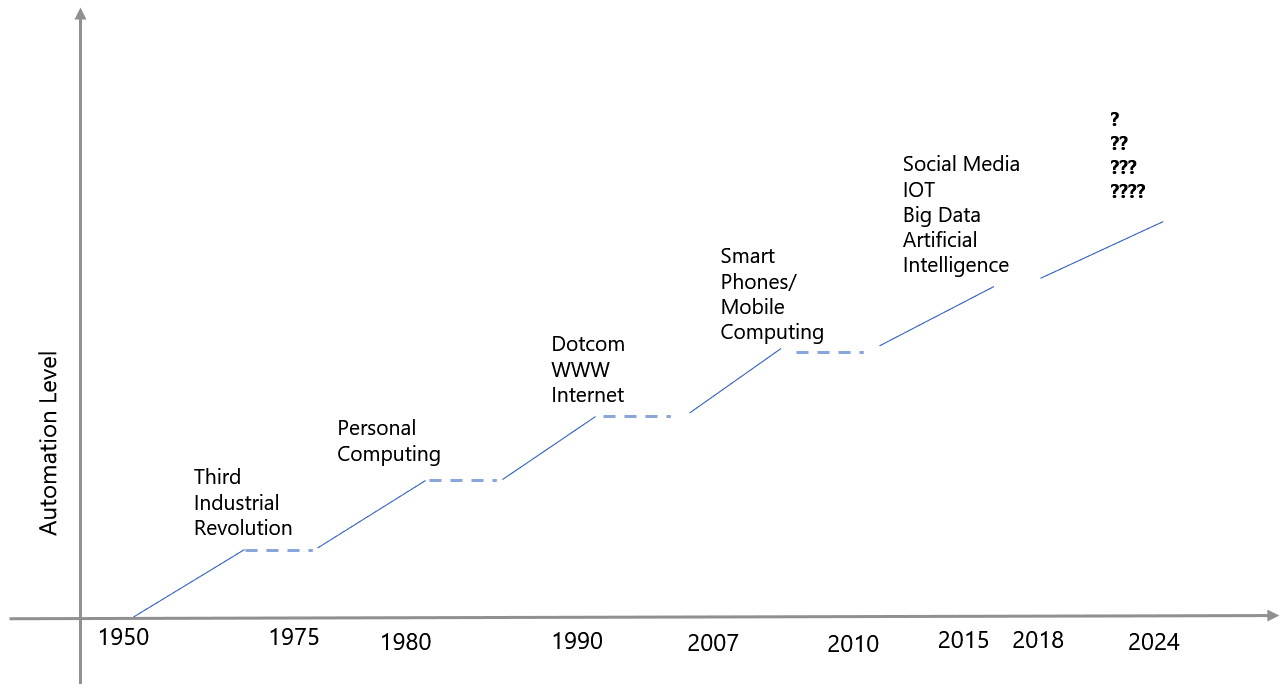Understanding Digital Evolution
The twentieth century belonged to organizations that adopted rapid mechanization and industrialization, riding on the wave of the third industrial revolution. The World Wars accelerated the need for countries and organizations to benefit from this wave of industrialization. There were a few other waves that followed and defined the progress of digital and automation experiences, such as the evolution of personal computing, the increased reach of the internet and the dot.com wave, and the advent of smartphones. All these innovations helped organizations and individuals to redefine the boundaries of what can be achieved and how much can be achieved in a short space of time. While it may have addressed some of the short-term goals of digital reach and automation, the desire for a total transformation of business process and productivity continues to grow like never before.
Here is a chronology of some significant milestones in the evolution of digital technology and how these advances have improved automation levels in various aspects of our lives:

Figure 1.1 – Evolution of digital experience
On the consumer digital experience front, the last decade has seen a significant rise in mobile computing and hardware reducing in size to become personal wearables. The best evidence of this is the rising market for mobile computing devices. Even though the sale of such devices might have been impacted by the worldwide contraction of the economy owing to the COVID-19 pandemic, mobile phones still constitute more than 80% of the total devices market for 2020.
The consumer digital evolution is waiting to explode further with the wearables market, where personal healthcare data from millions of consumers will be monetized over the coming years. We have already seen the smartwatch industry boom, with Apple taking a large share of the market. Amazon has also announced its Halo Band, which claims to help customers to improve their health and wellness.
While there is much to study and analyze in the consumer digital evolution space, for the purpose of this book, we will focus on the digital evolution and transformation that is happening in enterprises and organizations.



